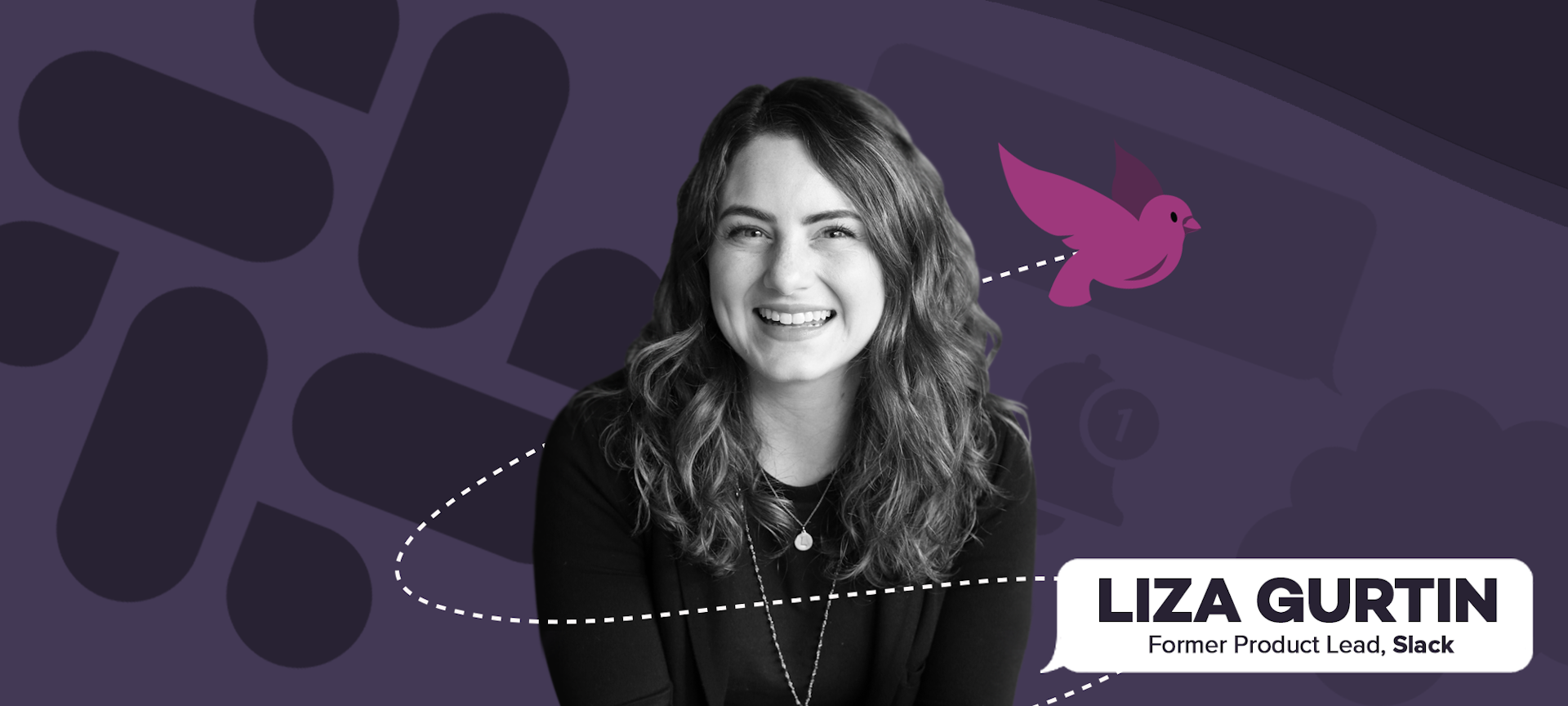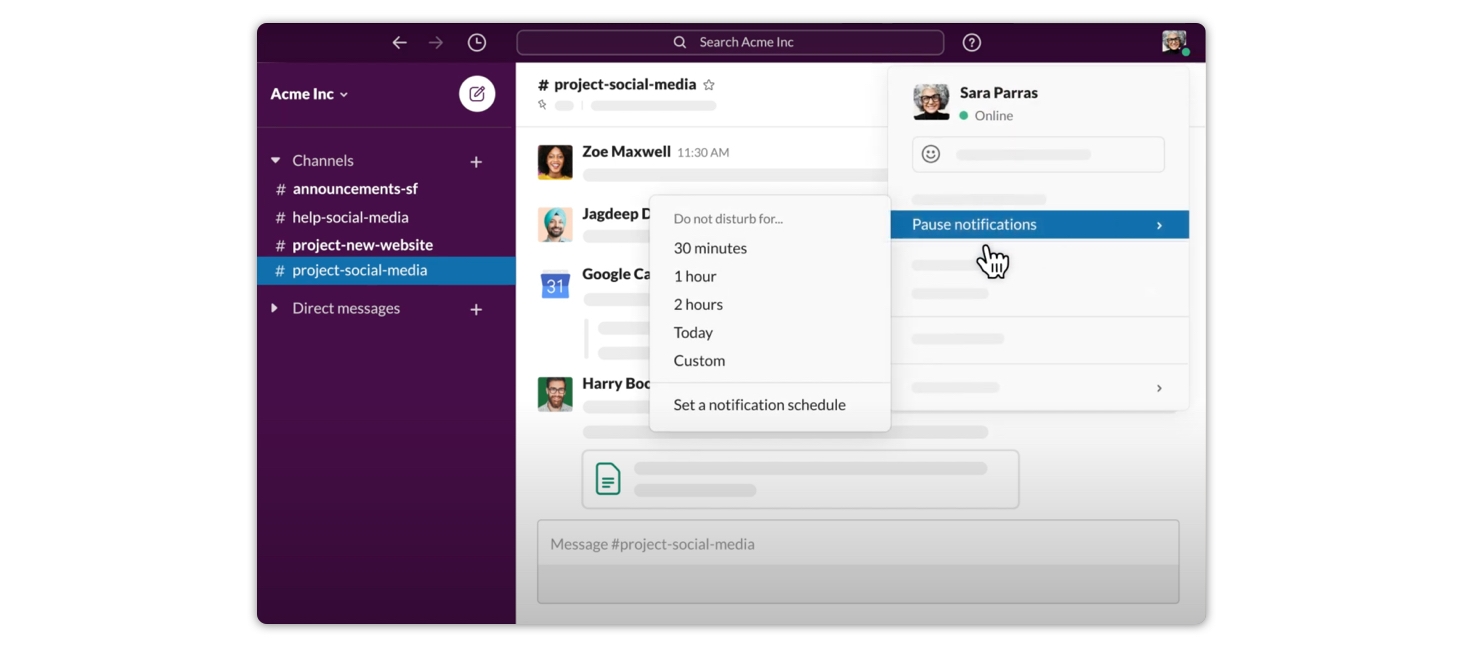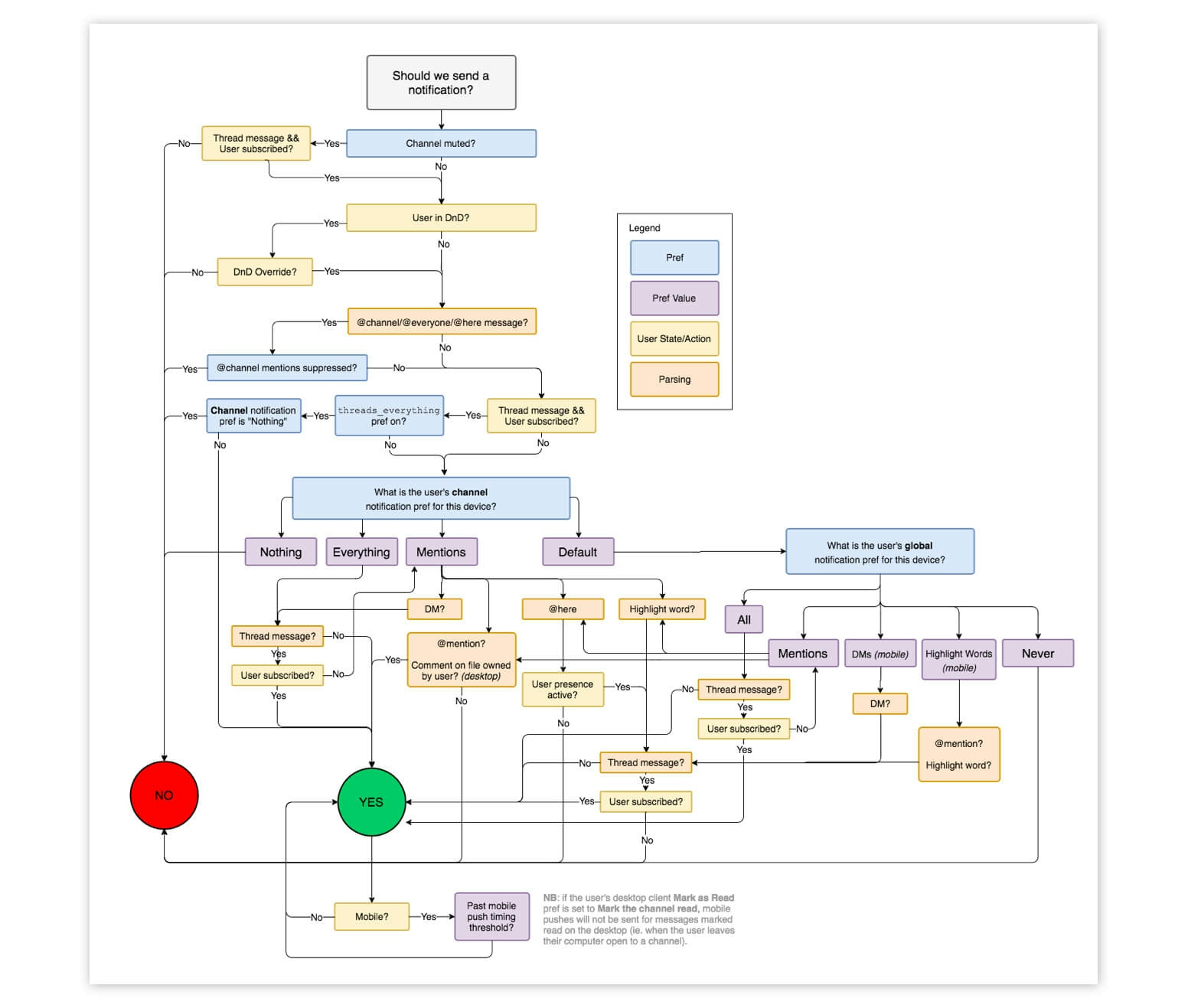Most Popular
Start Routing Notifications Today!
Courier is a notification service that centralizes all of your templates and messaging channels in one place which increases visibility and reduces engineering time.
Sign-up

How Slack Uses Notifications to Manage the Attention of 12 Million Daily Active Users
A push notification. A bolded channel. A red badge next to an unread conversation. These are all ways that Slack manages your attention.
For the messaging giant, managing attention is deeply intertwined with their mission of making work life more productive. Too much noise and suddenly what was an invaluable collaboration hub turns into a distraction. Not enough and it’s just another tool gathering virtual dust.
Today Slack commands the attention of more than 12 million daily active users around the world. And nobody knows more about capturing – and keeping – their attention than Liza Gurtin. As the former product lead for Slack’s notifications team, Liza’s charter was straightforward, if far from simple: empower users to sort the signal from the noise.
We sat down with Liza to understand how she and her team approached notifications at Slack. She shares her advice for mastering the default state, empowering users to set their preferences, and managing the complex logic of delivering notifications. Liza also explains why businesses shouldn’t lose sight of the user experience in pursuit of short-term growth. Let’s dive in.
Building up notifications and driving down support tickets
Notifications have always been core to using Slack. It makes perfect sense: as a messaging app, Slack is only as valuable as the conversations that it enables you to have. And notifications are the primary way that Slack pulls you into these conversations.
But it wasn’t until five years after the app launched that a team dedicated to notifications was formed. When Liza took charge of notifications in late 2018, she brought together a team of 10 full-time engineers along with part-time support from design, analytics, and user research.
One of the driving forces behind the new team? A slew of support tickets from frustrated users. “When the team first got started, notifications were actually one of the biggest drivers of support tickets,” Liza explains, “and one of the bigger problem areas in the product. In a lot of cases, notifications were working exactly as expected, but they weren’t meeting user expectations. Users would complain about missing notifications or being overwhelmed by too many of them.”

These support tickets directly informed the team’s charter – and their commitment to delivering what Liza saw as the core value of notifications. “Notifications are the primary way that products communicate with their customers, both in and outside the app,” Liza says, “and they’re deeply entangled with how products manage their users’ attention. As the notifications team, that was our charter: to enable Slack users to sort the signal from the noise.”
Once formalized, the team’s charter led them to prioritize where most problems with notifications start: the default state. That is, before any customization, what notifications should Slack send?
Invest in smart defaults for your notifications
Far too few products obsess enough over the out-of-the-box experience for their notifications. But, if you ask Liza, the default state is the most important one to get right. Why? Because it’s key to building trust with your users, especially your average user.
Liza puts it this way: “When users feel they need their attention drawn into Slack, they should trust Slack will notify them and pull them in. Equally, they need to trust that Slack’s not going to bother them when it’s something unimportant. That should be the default.”
The reality is your average user doesn’t want to – and won’t – spend hours customizing your product to make it work for them, and notifications are no exception to the rule. “Most users expect your notifications to work exactly the way they want,” Liza explains, “without having to do anything themselves. Less than 5% of Slack’s users customize their notification settings.”
That puts the impetus on product teams to set smart defaults. For Slack, smart defaults mean carefully managing their users’ attention across all the places they use the product, including in the browser, desktop client, and mobile app. “To minimize disruption and noise, we made two big decisions early on,” Liza says. “The first was to turn email off after a user downloads the mobile app. The second was to prioritize sending notifications to the user’s desktop client. By default, we only send push notifications to their phone if a user goes inactive on desktop.”

For the vast majority of Slack’s users, these smart defaults mean they get exactly the notifications they need. But the flip side to smart defaults – one that Liza argues is just as important – is putting control back into users’ hands. Both are necessary to meet different users’ differing expectations.
Put control in context with notification preferences
Notification preferences allow users to turn up, or down, the volume on things that your product wants to tell them. Liza compares it talking to a person: “Notifications preferences are a way for a user to say, ‘Hey, I don’t want to hear about this. Or, I only want to hear about these two topics.’”
When it comes to notifications, there’s a truism you can count on: a user will always know more about their preferences than you ever will. “In the context of Slack, the user knows their work day and the conversations that are important to them way better than our product team or even an AI model could predict,” Liza says. “Notifications are one area where more settings really are better.”
But it’s not enough to just enable these preferences somewhere in your product. To proactively help users manage their attention, particularly the ones who aren’t going to seek out these settings on their own, Liza doubled down on what she calls “control in context.”
“Control in context,” Liza explains, “is about presenting users with an opportunity to adjust their notification settings at the exact moment those settings are relevant.” She gives the example of Slack’s Do Not Disturb feature, which allows users to control the hours they receive notifications. “The first time a user gets a notification over the weekend, we should ask them whether they want to continue receiving notifications at this time in the future or change their settings. We know users are far more likely to take action when the feature is relevant than find the Do Not Disturb setting on their own.”

Together smart defaults and granular preferences enable Slack to manage their users’ attention with precision. Behind the scenes, powering this finely-tuned user experience is an equally robust notifications infrastructure.
Manage the complex logic of delivering notifications
Delivering user notifications is not unlike a playing game of “choose your own adventure.” Default settings, once combined with user preferences, often result in a myriad of ways one notification might, or might not, ever be brought to a user’s attention.
At Slack, answering the question “Should we send a notification?” requires navigating an intricate maze of decisions, ones made by both the business and the user. If you were on Twitter in 2017, there’s a good chance you came across Slack’s now infamous flowchart.

The driving force behind this flowchart is a clear cut objective: to deliver the notifications users expect, when and where they expect it. “This work was foundational,” Liza explains. “It was about making notifications work in the way that users already expected. That came down to two things: ensuring users weren’t overwhelmed by notifications and that they didn’t miss key notifications.”
Slack’s flowchart reflects the delicate balance the team struck between not overwhelming users and keeping them informed. For Slack’s Do Not Disturb feature, for example, the team decided to give senders the ability to override the setting. “Because we’re a workplace app,” Liza says, “we believe it’s important that people are able to notify their teammates of mission-critical messages, even when their teammates have temporarily paused notifications.”
You can think of each fork in Slack’s flowchart as a decision about what’s deserving of a user’s attention and what’s not. Taken as a whole, it’s a carefully constructed roadmap for pulling users into the app at exactly the right moments.
Focus on long-term value, not short-term growth
Finally, there’s a common misconception about notifications – and it’s that notifications are an easy way to drive growth for your app. It’s a misconception that Liza is determined to debunk.
Liza warns against the seductive rush of sending a lot of notifications and seeing engagement rates spike. “More usage is not always better usage,” Liza cautions. “You might see a big early benefit from sending a lot of notifications. But there’s a real downside: if you overwhelm users and they unsubscribe at the system level, at that point, you won’t be able to resurrect them at all.”
Notifications allow products to wield a lot of power over their users’ attention and, accordingly, they need to be leveraged with care. A helpful starting point is thinking about notifications in the context of the physical world. “Some notifications are like a gentle tap on the shoulder,” Liza says. “Some are asynchronous like getting a letter in the mail. Others are disruptive like screaming someone’s name over and over again. You can guess which ones will cause users to leave.”

While notifications are not a growth hacking tool, they can be an incredibly effective mechanism to drive sustained engagement with your app – and deliver more value to your users. Liza shares an example of a feature she considered launching at Slack: “One of the new notification types we thought about adding was alerting people if there’s a lot of activity in a channel they haven’t joined yet. Yes, this could be a growth tactic if someone isn’t actively using Slack. But, really, we believed that being part of these high-activity channels would deliver value to the user.”
When it comes to notifications, this is Liza’s challenge to other product builders: “How can you balance what’s good for your product and what’s truly net positive for your users? If you want your notifications to be a driver of retention, to really pull people back into your product, then you need to put the user experience first. Don’t be the person screaming in the office.”
Looking to level up your product's notifications? Courier is a complete notifications system for your app. Design, orchestrate, and track your user notifications across every channel – email, SMS, push, chat, and more. Create your free account today.
Start Routing Notifications Today!
Courier is a notification service that centralizes all of your templates and messaging channels in one place which increases visibility and reduces engineering time.
Sign-up
More from Product Management

The Product Manager's Guide To Building Notification Systems: Optimized Automation Logic
Tailored notifications are essential for a positive user experience. Learn how automation tools make it easy to customize user notifications.
Anwesa Chatterjee
October 27, 2022

The Product Manager's Guide To Building Notification Systems: Omni-channel Analytics
This is part 4 of a 5 part series. In this article, we talk about omni-channel analytics, why analytics are hard for notifications, and what we believe is needed to empower PMs. We’ll also share some specific tips on making the best of analytics data to design a more informed notification experience for your users.
Anwesa Chatterjee
October 13, 2022
Free Tools
Comparison Guides
Build your first notification in minutes
Send up to 10,000 notifications every month, for free.
Get started for free

Build your first notification in minutes
Send up to 10,000 notifications every month, for free.
Get started for free

© 2024 Courier. All rights reserved.